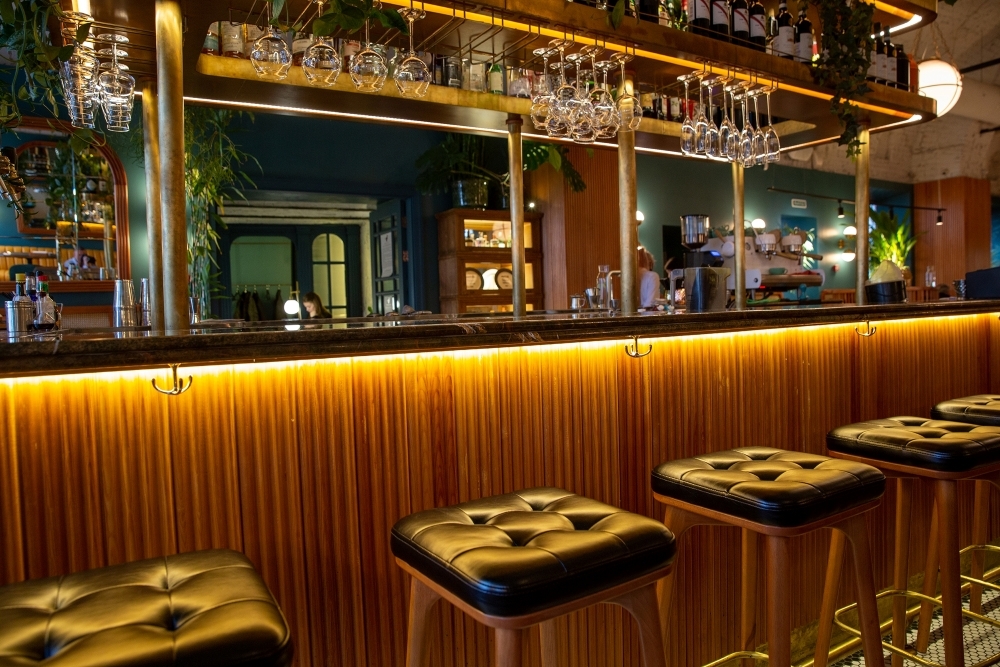The Best Museums in Hampstead
Perhaps it is the wild, enduring natural energy of Hampstead Heath that has made this particular part of North London so alluring to writers, philosophers, architects, musicians and all manner of creative thinkers over the years.
There is something inspiring about the marriage of such a timeless landscape to a modern and progressive capital city. And the cast of notable people who have drawn from this seemingly infinite well of inspiration over the past three hundred years makes a compelling list to study. The futuristic cinema director Ridley Scott and dystopian literary master, George Orwell, both responsible for shaping such powerful narratives in the 20th century, have lived here. Constable created some of his most famous painted works during his time on the Heath. Many of the Romantic poets spent years lyricising about what they witnessed in Hampstead and the great master of Psychology, Sigmund Freud, also brought his own titanic intellectual weight and enquiry to NW3 and its surrounding streets for a time.
It is little wonder then that Hampstead is blessed with more than its share of engaging, informative and attractive museums to support its residents and visitors. Here is our guide to a collection of the very best.

Freud Museum
In 1938, Sigmund Freud fled his native Vienna to escape persecution from the Nazi regime and eventually found a new home here in Maresfield Gardens in Hampstead. After his death in 1939, the family continued to live here until his daughter, Anna, passed away in 1982 and it was her wish that a museum would remain in their honour.
The exhibits and artefacts that this historical site houses represent some of the most striking symbols of Freud’s legacy and work. Central to the entire collection is his famous couch that was originally given to him as a gift from a patient in 1890 and eventually made the journey from Austria to London alongside him. Sigmund and Ann’s libraries are preserved exactly as they were when they were the functional tools of their practice, complete with Biedermeier furniture and shelves populated with Goethe, Shakespeare and Heine, all deemed influential on both of their acclaimed works. The dining room and conservatory charts the evolution of psychoanalytic theory through a curated selection of artefacts and there is even a commissioned portrait of the man himself completed by the surrealist genius Salvador Dali. This is a living part of modern history with the opportunity for a truly intimate connection with it.
Keats House
The influence that Romanticism has held for the last 200 years has made it a cornerstone of creative culture, evident in everything from architecture, music, film and of course literature. Its chief aim was always to marry imagination and emotion with the wonder and awe of nature to anchor human experience in a rapidly developing world that was moving towards modernity at breakneck speed.
At 10 Keats Grove, a white Regency villa stands as a testament to the high regard that the leaders of the Romanticism movement are held in. This was where the poet John Keats lived during his brief but incredibly eventful life of 35 years. Indeed, the mulberry bush that remains in the grounds is thought to be where he penned perhaps his most famous piece, Ode to a Nightingale, as he observed the bird’s fascinating song in this famous ‘melodious plot’. Artefacts here include his very own dip pen and inkwell that was wielded with such great purpose, and a working library that is furnished with his own collections. This place is also home to the engagement ring that he gave to the love of his life, Fanny Brawne, in secret before he left for Rome, never to see her again.
With regular recitals, poem readings and literary events, Keats House is a must-visit museum for anybody that appreciates the movement and power of the written word in the Western world.
2 Willow Road
Another of Hampstead’s famous residents was supposedly left so shaken by the initial building of 2 Willow Road that he decided to stir up an interesting protest. The James Bond author, Ian Fleming, was furious that this incredible modernist building had replaced a collection of Georgian terraces and decided to name the industrialist villain in his latest novel after the man responsible. The Hungarian architect Erno Goldfinger was a modernist master who operated during the interwar period under the influence of Le Corbusier, Perret and the principles of Bauhaus and the concrete frame and red brick cladding that he created at 2 Willow Road is a brilliant illustration of his ethos. The façade presented such a striking relief in the area compared to the surrounding designs, with everything inside set to the open plan rhythm of a striking spiral staircase and every detail carefully designed with function in mind.
Now Grade II-listed, the building was acquired by the National Trust and is open to the public for tours. The building is augmented by a thrilling collection of art with pieces from figures such as Henry Moore, Max Ernst, Marcel Duchamp and Prunella Clough, in a perfect showcase of how Hampstead was once again the epicentre of another generational movement for culture.
Burgh House & Hampstead Museum
One of the most attractive and defining features of Hampstead is its ability to adapt through the advancing ages and developing decades of London, while remaining an interesting, attractive and unique neighbourhood. The buildings wear that journey on their facades and constantly changing interiors document the transformation in a stylish way and Burgh House & Hampstead Museum is by far the best example of this.
On New End Square, this Queen Anne period Grade I-listed townhouse is a local icon, elevated above street level with its retreat set behind beautiful wrought iron gates that are over 300 years old. It acts as a living timeline for Hampstead through its evolution from a small spa village to a creative hub and one of the most attractive postcodes in the city, if not all of Europe. Amongst the collection is period apparel such as the 1930s blouse and hats worn by Hampstead resident and artist’s muse, Daphne Charlton, and a pair of skis used on the heath by locals almost a century ago. With a vast trove of community event literature, invitations, public notices and photographs that chart the social history of Hampstead, this is the ultimate archive of the area in an exquisite setting.
Hampstead will surely continue to prosper well into the 21st century with its appreciation of and encouragement for the arts still very much in rude health. Visiting these wonderful places that celebrate the story of such a transformational London neighbourhood allows one to feel connected and invigorated, with a wealth of experiences that will have you walking in the steps of cultural giants along the cobbled alleyways.



